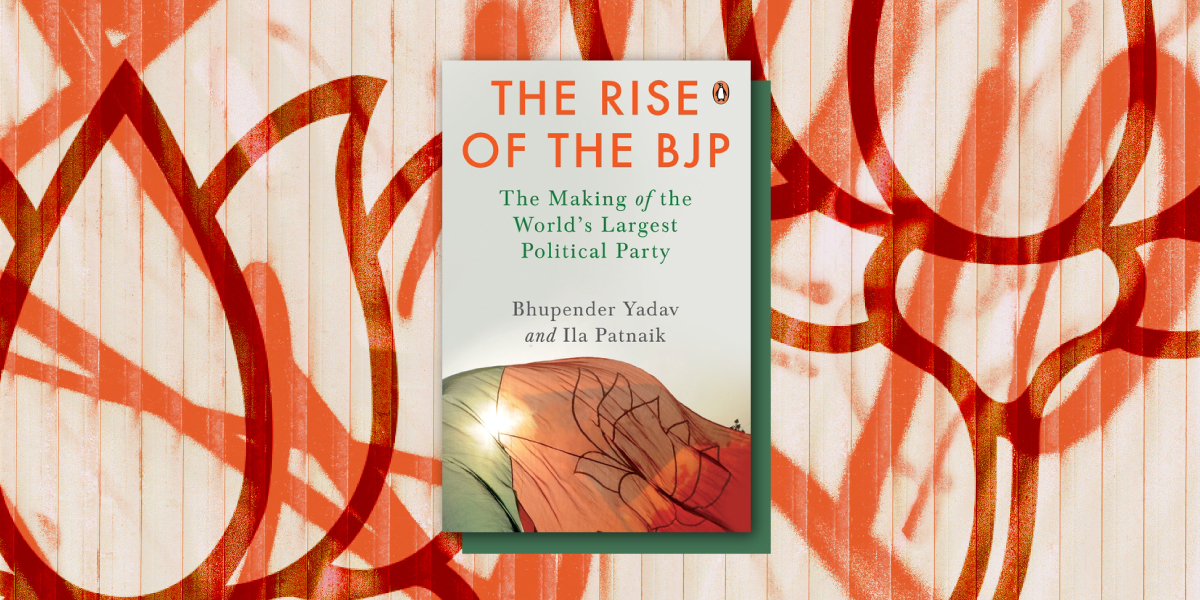
In The Rise of the BJP, co-authors Bhupender Yadav and Ila Patnaik chart the journey of how BJP came into existence and established itself as one of the most powerful political parties. It delves into the political strategies and the organizational design that made the party successful and drove the transformation.
Let’s read this excerpt to understand BJP’s position in the government, starting from 1996 and how it eventually rose to becoming the single-largest party.
*

After the fall of the Vajpayee government, thirteen parties came together as the ‘United Front’ to form a government with the support of the Congress from the outside. The new administration started with H.D. Deve Gowda as the Prime Minister, on 1 June 1996. The coalition depended on Congress support. However, the Congress began to soon feel uncomfortable with the decisions of the Deve Gowda administration. For one, Gowda showed a lack of interest in post-poll adjustments in the run-up to the 1996 UP state elections. Further, he announced the creation of Uttarakhand as a separate state in his Red Fort speech on 15 August 1996, without consulting the Congress. He was also unhelpful towards the Congress leaders who had pending cases against them with the agencies. Issues such as these led to a change of heart in the Congress and the party withdrew its support to the Deve Gowda government.
On 11 April 1997, Gowda had to face a floor test after the Congress withdrew support. When Gowda spoke during the floor debate, he referred to Kesari’s prime ministerial ambitions, describing the Congress president Sita Ram Kesari as an ‘old man in a hurry’. As expected, the Gowda government lost the trust vote by 292 to 158 votes.
After Gowda was voted out, Congress supported another coalition, and a new Prime Minister was sworn in. Inder Kumar Gujral, who was foreign minister in Gowda’s government, became the Prime Minister, again with outside support of the Congress. However, Gujral’s term was also short-lived. Following a hung Assembly in the Uttar Pradesh elections of 1996, a powersharing agreement had been reached between the BJP and BSP in April 1997. It was decided that for the first six months, BSP leader Mayawati would be the state’s chief minister and for the next six months, Kalyan Singh from the BJP would head the state.
However, during Kalyan Singh’s tenure, the BSP decided to withdraw its support due to disagreement over certain issues. This led to considerable friction and some violence in the streets, which prompted the BJP government led by Kalyan Singh to call for a vote of confidence. In response to BSP’s decision, BJP state leader Rajnath Singh announced that if the BSP wanted to withdraw its support, it could do so. He was optimistic about the BJP winning the vote of confidence as it was the single-largest party in the state.
Prime Minister Gujral responded to this by recommending the imposition of President’s Rule in the state. In a rare act of autonomous decision-making by the office of the President, President K.R. Narayanan did not act on this; he asked the government to review its recommendation. To avoid a confrontation with the President, the United Front government was forced to reverse its decision to dismiss the Kalyan Singh government. While most allies in the United Front agreed that a confrontation was best avoided, the Congress wanted the BJP government to go. The Congress felt that the BJP was gaining ground in Uttar Pradesh and could become the major force in the state. In stark opposition to the Congress party, prime minister Gujral did not want President’s Rule to be imposed in UP. However, as his government was in place with the Congress’s support, his decision not to dismiss the BJP government in UP made the collapse of his government imminent.
It was, however, the investigation into Rajiv Gandhi’s assassination that brought the coalition government led by I.K. Gujral to a premature end. The inquiry commission’s report on the assassination of Rajiv Gandhi, led by Justice Milap Chandra Jain, said that the conspiracy to assassinate Rajiv Gandhi had a connection to the DMK. The Jain Commission report concluded that the DMK had provided sanctuary to the Liberation of Tamil Tigers Eelam (LTTE) and was thus an accomplice in the assassination. These explosive findings triggered a chain reaction that shattered reputations, forced realignments and brought down Gujral’s fragile government. When the Gujral government did not dismiss the DMK from the Cabinet, despite these allegations, Congress president Sita Ram Kesari announced the withdrawal of support from the government. Gujral’s time as prime minister lasted eleven months.
In his resignation letter, Gujral wrote, ‘. . . My Council of Ministers and I hereby submit our resignation from my Government. In my communication to the Congress President [Kesari], I have said that it is unfair and unethical to tarnish the fair name of a party only because the Jain Commission’s Interim Report—without any substantiated data—has chosen to blame the party and, I say with sadness, the entire Tamil people . . . My Council of Ministers and I hereby submit our resignation.’
…
Mid-term Lok Sabha elections were held in 1998. The BJP built on its growing success in elections and scaled up its methods. A large-scale mobilization of voters had been accomplished through numerous yatras at the national stage and within many states. By this time, measurement of the populace through polls had become an important activity, both within the media and as an information system to support decision making in election campaigns. The BJP brought in greater professionalism to do the number crunching in order to chalk out winning strategies.
The results were consistent with the long journey of the BJP towards growing influence.









